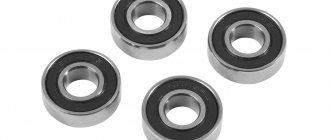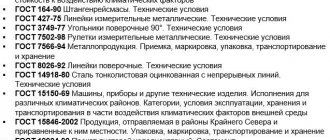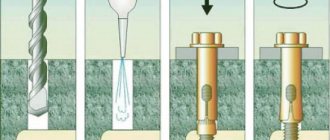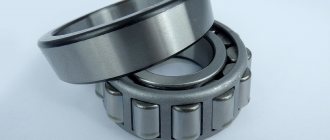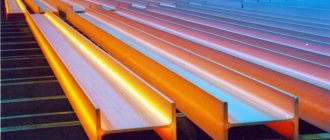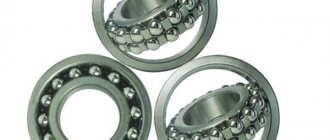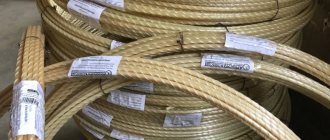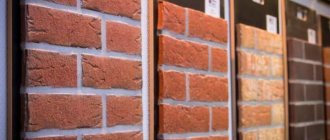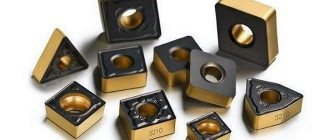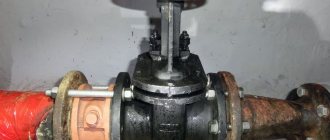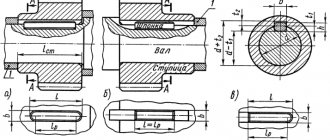A support or, as is commonly called, thrust bearing is a special type of rolling and sliding bearings that support exclusively axial loads. There are also types that absorb radial forces to a greater or lesser extent - angular contact and thrust radial bearings.
Article navigation
Support bearing design
Purpose of support bearings
Types and features of support bearings
Features of support bearing maintenance
What are rolling bearings and what are they for?
The products consist of two rings, which are the outer and inner races, or supporting part, of the rolling components, a separator that separates them, holds them at the same distance and guides them.
Special grooves or tracks are machined along the upper surface of the small and inner parts of the large holder. For persistent PShKs, grooves are made at the ends. To reduce dimensions, increase accuracy and degree of rigidity, specially designed combined supports are used in a number of mechanism components. In this case, grooves for balls or rollers are machined on the shaft or on the surface of the housing into which installation is planned.
There are types that operate without a separator. They have an increased number of parts, increased load capacity, but the maximum rotation speed parameters are significantly lower due to the increased moment of resistance that occurs in the rubbing, undivided balls.
The main difference between rolling bearings and sliding bearings is the reduced energy consumption for friction and reduced operational wear. Closed products require virtually no lubrication or other maintenance, even under intensive use. Open parts are quite sensitive to the ingress of debris and foreign objects, which leads to malfunction and premature failure or complete destruction.
During operation, various force effects arise: radial, directed perpendicularly, and axial, acting in parallel.
International system
Thus, in Russia, enterprises manufacturing bearings must adhere to GOST without fail. It is not at all difficult to determine what a product produced in our country is by looking at its labeling. With imported devices of this type, unfortunately, everything is far from so simple.
Abroad, the classification of bearings is the same as ours, but, unfortunately, there is no generally accepted clear designation system there. Foreign manufacturers label their products as they please.
Additional designations on bearings made, for example, in China, can be applied both before and after the main block. The basic information itself, as in the Russian system, is usually presented in the form of several numbers (3-5). Most often in the marking of imported bearings:
- the first character indicates the type of product;
- the next two digits represent the ISO size series;
- the last two digits indicate the bearing size code.
As in the Russian system, in the Chinese the last two digits, if any, should be multiplied by 5. In this way, the internal diameter of the bearing can be determined in millimeters.
For example, the characteristics of bearings marked as N315-EM/C3 will be as follows:
- N is a type of radial roller bearing;
- 315 - ISO dimensions of the product;
- the letters EM indicate in this case that the bearing is equipped with a brass cage;
- C3 - radial clearance group.
Classification of rolling bearings, markings, advantages and disadvantages, diagrams
Grouping into classes is carried out according to a number of distinctive features and technical characteristics:
- shape and number of bodies;
- direction of working forces and constant load, dimensions;
- self-installation capability
- type of cage, which can be snake, the most common, riveted and solid.
Of great importance is the accuracy class of a rolling bearing, which is an important selection criterion in the production of mechanisms and assemblies with strict requirements of standards and operating conditions.
According to the shape of the bodies
- Ball bearings have a significant rotation speed, due to less contact with the plane, friction losses are lower than those of roller bearings. The products have simplified installation, low noise levels and low cost.
- Roller parts have increased load capacity and wear resistance, are manufactured with shortened and long bodies in the form of cylinders, barrels, needle-shaped, cone-shaped, combined, etc. They are practically not afraid of overloads, but require great care during installation; when overtightening, deformation of the separator is possible.
You can distinguish the parts by the existing markings on the diagram, in the main index consisting of 7 digits, the fifth indicates the configuration of the bodies. For example: 3 - conical roller, 6 - single-row ball, N - cylindrical with rollers, etc.
Number of rows
According to this indicator, PShK are divided into:
- single-row ones work well under axial, bilateral and radial force impacts, and withstand distortions. The ability to use with an increased angle of inclination in the absence of a bead ring significantly increases functionality. At the same time, the carrying capacity is limited and the ability to absorb instantaneous loads is reduced. The distinctive designation of the marking is: ball: 6 - radial, 7 - angular contact, roller: 2 - spherical, 3 - conical, 8 - thrust, etc.
- double-row ones allow a slight misalignment only in the case of a machined groove in the cage, but they have increased load capacity, endurance and the ability to work with significant shaft deformations, and withstand multidirectional forces well. They have a much greater resource, but also an increased cost. Designations: 0 - angular contact, 4 - radial ball.
Shaft distortion compensation method
- self-aligning, which include spherical parts used for angular and not entirely accurate axial position of the mechanism shaft and housing mounting hole. The elements have increased speed characteristics, no need for regular maintenance, reduced levels of friction and noise, and are weakly sensitive to angular distortions. These parts are 2-row ball bearings with a common groove on the outer race.
- requiring carefully verified installation, as well as compliance with tolerances during landing. The products are mostly 1-row, fairly inexpensive, and are used in units and mechanisms with light loads. The rows are marked accordingly.
Ability to carry load in preferred direction
The distinctive features and characteristics of the elements mainly differ in their ability to withstand different types of pressure in all directions, as well as instantaneous impacts. More detailed features are given below in the purpose section. The marking is indicated by a number in brackets.
- radial (6), for the possibility of exerting significant forces;
- thrust (8), for combined load, taking into account the deviation of the roller axes;
- persistent radial (0), capable of absorbing mainly axial forces.
Dimensions with the same inner diameter
According to this parameter, PShK are distributed into series; in the marking index it is indicated by the number 3, in brackets:
- ultra-light (8 and 9), extra-light (1.7), used in small mechanisms where it is not necessary to withstand significant loads;
- lightweight (2) and wide lightweight (5), requiring increased load capacity and the ability to withstand axial and radial forces;
- medium (3) and medium-wide (6), for complex devices operating under constant load;
- heavy (4) and extra-heavy, for power units and mechanisms of large sizes that require calmly accepting multidirectional increased impacts.
Width with comparable outer frame size
According to this indicator, products are classified depending on the degree of load capacity and the ability to withstand axial pressure. A more expanded design is more resilient to vibration and shaft beating:
- narrow (7);
- normal (1);
- wide (2);
- extra wide (3-6).
Device Dimensions: Inner Diameter
This parameter is indicated by the first two digits from the end in the marking. For bearings with an internal diameter over 20 mm, they need to be multiplied by 5. In our example, these are numbers 0 and 6. We multiply six by five, we get 30 mm.
Of course, not only large bearings can have sizes.
The table below shows how the internal diameter of small products of this type (up to 20 mm) is marked. In this case, there is no need to multiply anything by 5. Marking of bearings with an internal diameter less than 20 mm
| Marking | Diameter |
| 10 mm | |
| 01 | 12 mm |
| 02 | 15 mm |
| 03 | 17 mm |
Installation of rolling bearings
The design features of the FS, shafts and body parts, which act as the supporting part of the assembly unit, must ensure ease of installation of each component, compliance with the prescribed tolerances and technological clearances for the specified performance of the mechanism and the entire unit as a whole.
Installation is carried out without the need for adjustment and additional machining. If the need for adjustment arises, there is a possibility of disruption of proper functioning in the future under heavy load.
When the landing interference is provided, the PN is pre-mounted on the shaft and in the housing part, and the complete connection of the entire assembly is carried out using landing belts with the provided gaps. Assembly becomes significantly more complicated when an interference fit is required simultaneously on the shaft and in the housing element.
Ring stoppers are often used for fixation. All installation efforts should be made using fixtures or hydraulic pressing mechanisms equipped with mandrels and devices to prevent distortion.
If there are no mandrels for installation, and it is necessary to install the PShK with interference, you can use a hammer, preferably with a copper knob, and always a damping gasket or a guide pipe. The blows are applied evenly; axial distortion of the clips must not be allowed; damage to the seat may occur, which can lead to a reduction in service life and destruction of the part.
Sliding Device Standards
Bearings of any variety are primarily standard products. Otherwise, it would be extremely difficult to select such a device for a particular mechanism.
According to what standards are bearings manufactured?
GOST regulates not only the actual dimensions of such products, but also, for example, the symbols of their structural elements and many other parameters. Exactly which regulatory documents regulate the manufacture of sliding devices can be seen in the table below. GOST for plain bearings
| Standard | Which GOST regulates |
| Abbreviations and conventions | 7904-1 |
| Parameters for calculation | 4378-4 |
| Standards for Copper Alloy Bushings | 4379-2006, 29201-91 |
| Design features and bearing materials | 4378-1 |
| Ring sizes and types | 28801-90 |
| Dimensions of ceramic bushings | 2795-2001 |
| Dimensions and types of bushings, types of sintered materials | 24833-81 |
| Definitions and terms for bearings of mechanisms and machines | 18282-88 |
Grease for rolling bearings, how to choose before assembly
Depending on the operating conditions and the design of the assembly mechanism, various compositions can be used, from oils to grease compositions.
Basic lubrication requirements:
- physical and chemical stability;
- absence of mechanical and other foreign impurities;
- protection against corrosion and oxidation of surfaces;
- good plastic characteristics, the ability to absorb and neutralize the effects of centrifugal forces;
- maintaining the initial consistency and degree of viscosity throughout the entire period of operation.
All basic recommendations for each series are described in detail in GOST and technological instructions, which should be carefully studied before installation.
Hydraulic thrust bearings
In hydraulic thrust bearings, the axial load is absorbed by an oil cushion in a closed cavity fed by a pump. The shaft is maintained in a constant vertical position by means of oil distribution devices.
In the simplest design (Fig. 724, a), oil is supplied to the annular groove m of the thrust bearing, from where, through the flat n and a radial hole in the shaft, it enters the closed space under the end of the shaft.
The position shown in the figure (the edge of the flat touches the edge of the annular groove) is equilibrium: the oil supply groove is blocked; oil is not supplied to the shaft end. When the shaft is lowered, the radial hole communicates with the annular groove, oil flows under the end of the shaft, returning it to its original position. Thus, the shaft continuously oscillates with a small amplitude near the equilibrium position.
The flat, which ensures the opening of large sections at once, helps to reduce the amplitude of vibrations.
Thrust washer 1, located with a small gap relative to the thrust bearing flange, serves to fix the shaft in stops.
In design (b), the oil cushion is fed by means of a needle valve controlled by a shaft. The equilibrium position is when the end of the shaft lightly touches the valve shank, which is in the closed state. When lowered, the shaft opens the valve and oil enters the cavity, returning the shaft to its original position.
The load-bearing capacity of hydraulic thrust bearings depends on the oil supply pressure and the cross-sectional area of the shaft. At a pressure of 3-4 MPa, the load capacity is comparable to the load-bearing capacity of mechanical thrust bearings of the same radial dimensions.
If diameter d = 50 mm, supply pressure p = 3 MPa, then load-bearing capacity P = 0.785 d2 p = 0.785 502 3 = 6 kN.
Friction (meaning friction on the oil pad) is negligible.
If the oil cushion is powered by a pump with an independent drive, then during the periods of start-up and run-down there is no semi-fluid friction on washer 1.
The disadvantages of hydraulic thrust bearings are high oil pressure, relatively high power consumption to create an oil cushion, and insufficiently precise fixation of the shaft in the axial direction.
Hydraulic thrust bearings are used for shafts of small diameter (up to 50 mm on average) loaded with forces of up to 10 kN. For heavy loads, it is advisable to use energy-efficient hydrostatic bearings.
Purpose and selection of ball bearings
- Radial single-row ones accept 2-sided axial loads well and function well when skewing;
- With 2 rows, the radial-spherical ones have a groove for placing and moving the balls on the surface of the outer race, which allows the rings to warp up to 4 degrees. This circumstance makes it possible for large deformations of the shaft and incomplete alignment of the support holes in the body parts. P/w well withstands axial forces arising from both sides. At rotation speeds exceeding 10 m/s, it is necessary to use a sufficiently large and powerful separator to prevent deformation of the mechanical unit;
- Single-row angular contact elements tolerate unilateral loads and forces well. A design feature is a cut ring of the outer side on one side, making it possible to install a larger number of balls of comparable parameters and increase the load-bearing capacity by up to 30%. An increase in effort allows the use of parts at an increased angle of inclination, which expands functionality;
- 2-row angular contacts are capable of functioning with increased all force impacts that occur in different directions. In this case, increased requirements are placed on the degree of rigidity of the shaft supports;
- With 4-point support, they are in demand for large 2-sided forces and high loads. Load capacity along the radial axis is increased by 50% compared to a single-row element;
- A single thrust can only operate under axial impact, a double under alternating impact at rotation speeds in the range from 5 to 10 m/sec.
Features and types of roller bearings
Although roller ballasts operate at lower shaft speeds than ball rollers, their load capacity is 50-70% higher.
Main series:
- Radial ones with shortened cylindrical bodies are able to withstand increased impacts, allow the holders to be mixed along the axis, and are in demand in cases where it is necessary to ensure the operability of the shaft during axial displacements;
- 2-row spherical ones allow displacement up to 3 degrees, well perceive radial forces and 2-sided axial forces;
- Radial contact with conical bodies are characterized by ease of assembly and installation, capable of withstanding one-sided pressure at a contact angle from minus 8 to 16 degrees. The elements have an increased degree of sensitivity to deviation from a given axis and body distortion;
- The needle-shaped one functions only with radial forces; it can be mounted without one of the holders if the overall dimensions do not allow. The seat of the shaft and the housing part should be subjected to heat treatment, hardening until increased hardness is achieved, then grinding and polishing to the deviations specified by the standards. Operate at a rotation speed of no more than 5 m/sec;
- An element with twisted bodies takes shock impacts well in operation. To prevent axial displacement of the upper and lower races, the rollers alternate with opposite winding.
List of GOSTs
1. GOST 520—2002 Rolling bearings. General technical conditions.
2. GOST 831-75 Single row angular contact ball bearings. Types and main sizes.
3. GOST 832-78 Double angular contact ball bearings. Types and main sizes.
4. GOST 2893-82 Rolling bearings. Grooves for thrust spring rings. Spring thrust rings. Dimensions.
5. GOST 3189-89 Ball and roller bearings. System of symbols.
6. GOST 3325-85 Rolling bearings. Tolerance fields and technical requirements for the seating surfaces of shafts and housings. Landings.
7. GOST 3395-89 Rolling bearings. Types and designs.
8. GOST 3478-79 Rolling bearings. Basic dimensions.
9. GOST 3722-81 Rolling bearings. Balloons. Technical conditions.
10. GOST 4252-75 Double-row angular contact ball bearings. Basic dimensions.
11. GOST 4657-82 Single-row radial needle roller bearings. Basic dimensions. Technical requirements.
12. GOST 5377-79 Radial roller bearings with short cylindrical rollers without an inner or outer ring. Types and main sizes.
13. GOST 5721-75 Double-row spherical roller bearings. Types and main sizes.
14. GOST 6364-78 Double-row tapered roller bearings. Basic dimensions.
15. GOST 6870-81 Rolling bearings. Needle rollers. Technical conditions.
16. GOST 7242-81 Single-row radial ball bearings with protective washers. Technical conditions.
17. GOST 7634-75 Multi-row radial roller bearings with short cylindrical rollers. Types and main sizes.
18. GOST 7872-89 Single and double thrust ball bearings. Technical conditions.
19. GOST 8328-75 Radial roller bearings with short cylindrical rollers. Types and main sizes.
20. GOST 8338-75 Single-row radial ball bearings. Basic dimensions.
21. GOST 8419-75 Four-row tapered roller bearings. Basic dimensions.
22. GOST 8530-90 Rolling bearings. Nuts, washers and brackets for adapter sleeves. Technical conditions.
23. GOST 8545-75 Double-row ball and roller bearings with adapter sleeves. Types and main sizes.
24. GOST 8882-75 Single-row radial ball bearings with seals. Technical conditions.
25. GOST 8995-75 Single-row angular contact ball bearings with one split ring. Types and main sizes.
26. GOST 9592-75 Radial ball bearings with a protruding inner ring. Technical conditions.
27. GOST 9942-90 Single spherical thrust radial roller bearings. Technical conditions.
28. GOST 13014-80 Coupling bushings for rolling bearings. Basic dimensions.
29. GOST 18572-81 Roller bearings with cylindrical rollers for axle boxes of railway rolling stock. Basic dimensions.
30. GOST 18854-94 Rolling bearings. Static load capacity.
31. GOST 18855-94 Rolling bearings. Dynamic design load capacity and design life (durability).
32. GOST 20531-75 Combined angular contact needle roller bearings. Technical conditions.
33. GOST 22696-77 Rolling bearings. Short cylindrical rollers. Technical conditions.
34. GOST 23179-78 Single-row flexible radial ball bearings. Technical conditions.
35. GOST 23526-79 Thrust roller bearings with single cylindrical rollers. Types and main sizes.
36. GOST 24208-80 Adapter bushings for rolling bearings. Basic dimensions.
37. GOST 24297-87 Incoming inspection of products. Basic provisions.
38. GOST 24696-81 Double-row spherical radial roller bearings with symmetrical rollers. Basic dimensions.
39. GOST 24810-81 Rolling bearings. Gaps.
40. GOST 24850-81 Single-row radial ball bearings with two seals, a wide inner ring and a spherical outer surface of the outer ring. Basic dimensions.
41. GOST 24955-81 Rolling bearings. Terms and Definitions.
42. GOST 25255-82 Rolling bearings. Long cylindrical rollers. Technical conditions.
43. GOST 25256-82 Rolling bearings. Tolerances. Terms and Definitions.
44. GOST 25455-82 Rolling bearings. Fastening and tightening sleeves. Technical conditions.
45. GOST 27057-86 Single tapered roller thrust bearings. Basic dimensions.
46. GOST 27365-87 Single-row tapered roller bearings with increased load capacity. Basic dimensions.
47. GOST 28428-90 Double-row spherical radial ball bearings. Technical conditions.
48. GOST 9013-59 Metals. Rockwell hardness measurement methods.
49. GOST 3635-78 Plain bearings. Technical conditions.
50. GOST R 52545.1-2006 (ISO 15242-1:2004) Rolling bearings. Vibration measurement methods. Basic provisions.
Materials for the manufacture of rolling bearings
For the production of the main components, chromium steel alloys with a high carbon content ShKh15SG, ShKh15, etc., and alloyed case-hardening steels are used. For operation at elevated temperatures and in aggressive conditions, corrosion-resistant and heat-resistant steel alloys are used.
Cages require carbon steel and are produced by stamping. If operation occurs at an increased speed of shaft rotation, the separation elements are made of bronze, brass, etc.
Content
- Difference between roller and ball bearings
- Types of Roller Bearings
- Single row cylindrical roller bearing
- Double row roller bearing
- Spherical roller bearings
- Support rollers with axle
- High load capacity support rollers
- Roller screw drive
